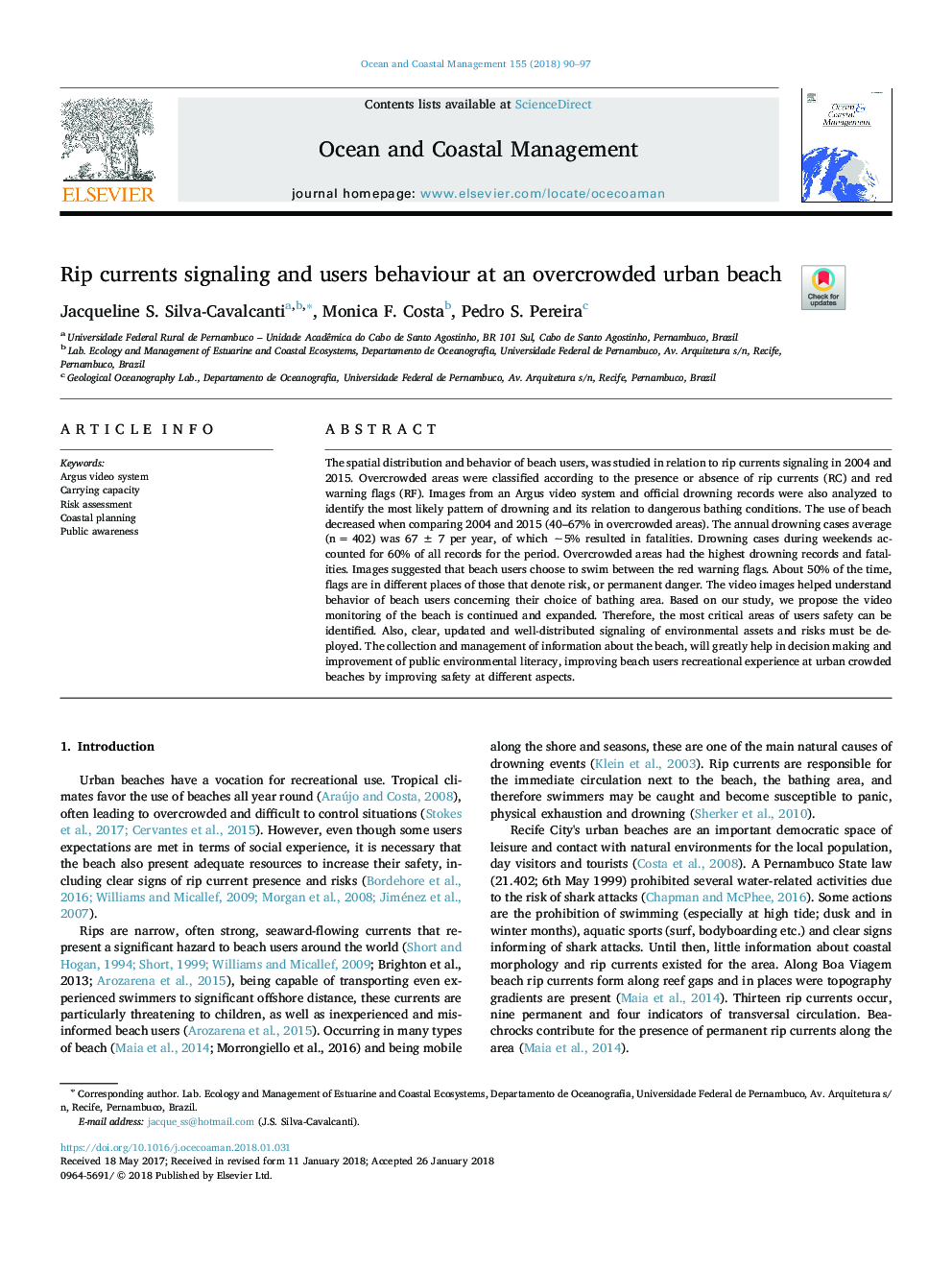| Article ID | Journal | Published Year | Pages | File Type |
|---|---|---|---|---|
| 8060805 | Ocean & Coastal Management | 2018 | 8 Pages |
Abstract
The spatial distribution and behavior of beach users, was studied in relation to rip currents signaling in 2004 and 2015. Overcrowded areas were classified according to the presence or absence of rip currents (RC) and red warning flags (RF). Images from an Argus video system and official drowning records were also analyzed to identify the most likely pattern of drowning and its relation to dangerous bathing conditions. The use of beach decreased when comparing 2004 and 2015 (40-67% in overcrowded areas). The annual drowning cases average (nâ¯=â¯402) was 67â¯Â±â¯7 per year, of which â¼5% resulted in fatalities. Drowning cases during weekends accounted for 60% of all records for the period. Overcrowded areas had the highest drowning records and fatalities. Images suggested that beach users choose to swim between the red warning flags. About 50% of the time, flags are in different places of those that denote risk, or permanent danger. The video images helped understand behavior of beach users concerning their choice of bathing area. Based on our study, we propose the video monitoring of the beach is continued and expanded. Therefore, the most critical areas of users safety can be identified. Also, clear, updated and well-distributed signaling of environmental assets and risks must be deployed. The collection and management of information about the beach, will greatly help in decision making and improvement of public environmental literacy, improving beach users recreational experience at urban crowded beaches by improving safety at different aspects.
Related Topics
Physical Sciences and Engineering
Earth and Planetary Sciences
Oceanography
Authors
Jacqueline S. Silva-Cavalcanti, Monica F. Costa, Pedro S. Pereira,
